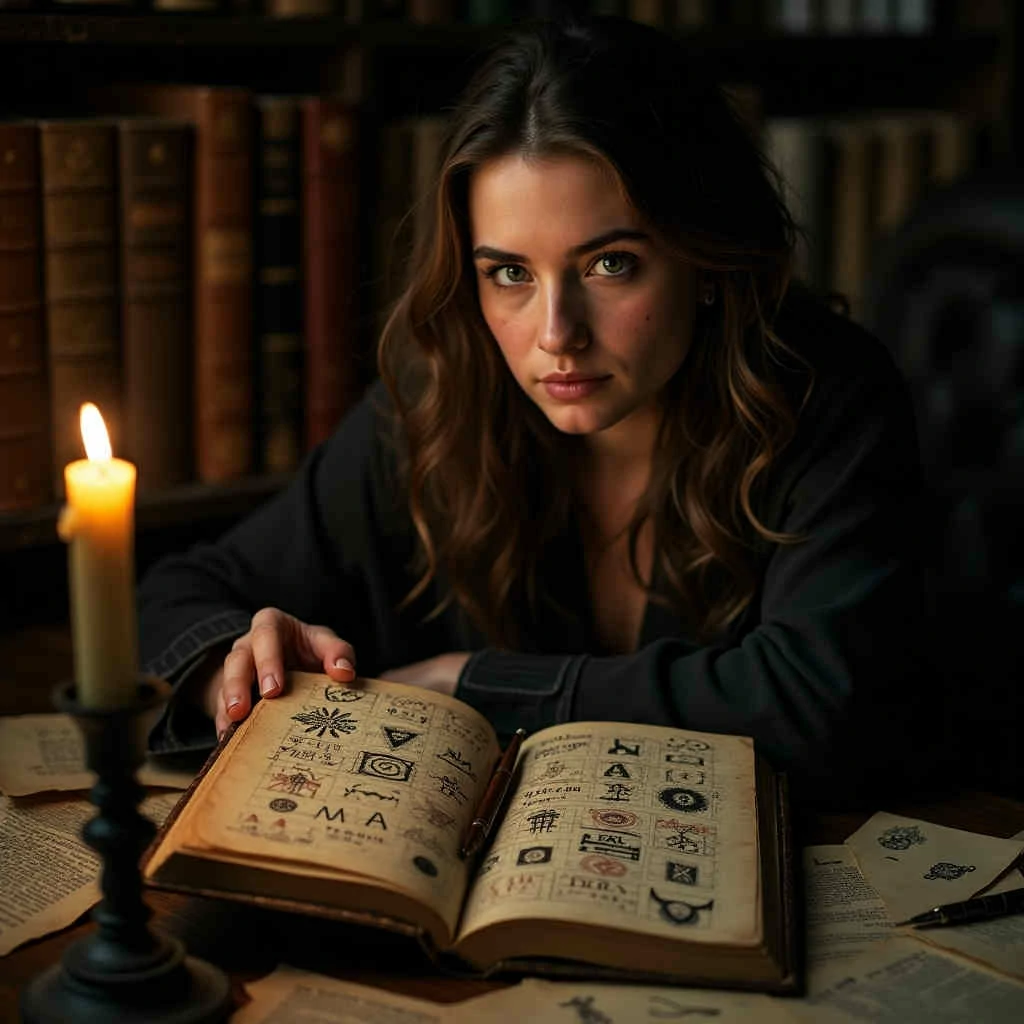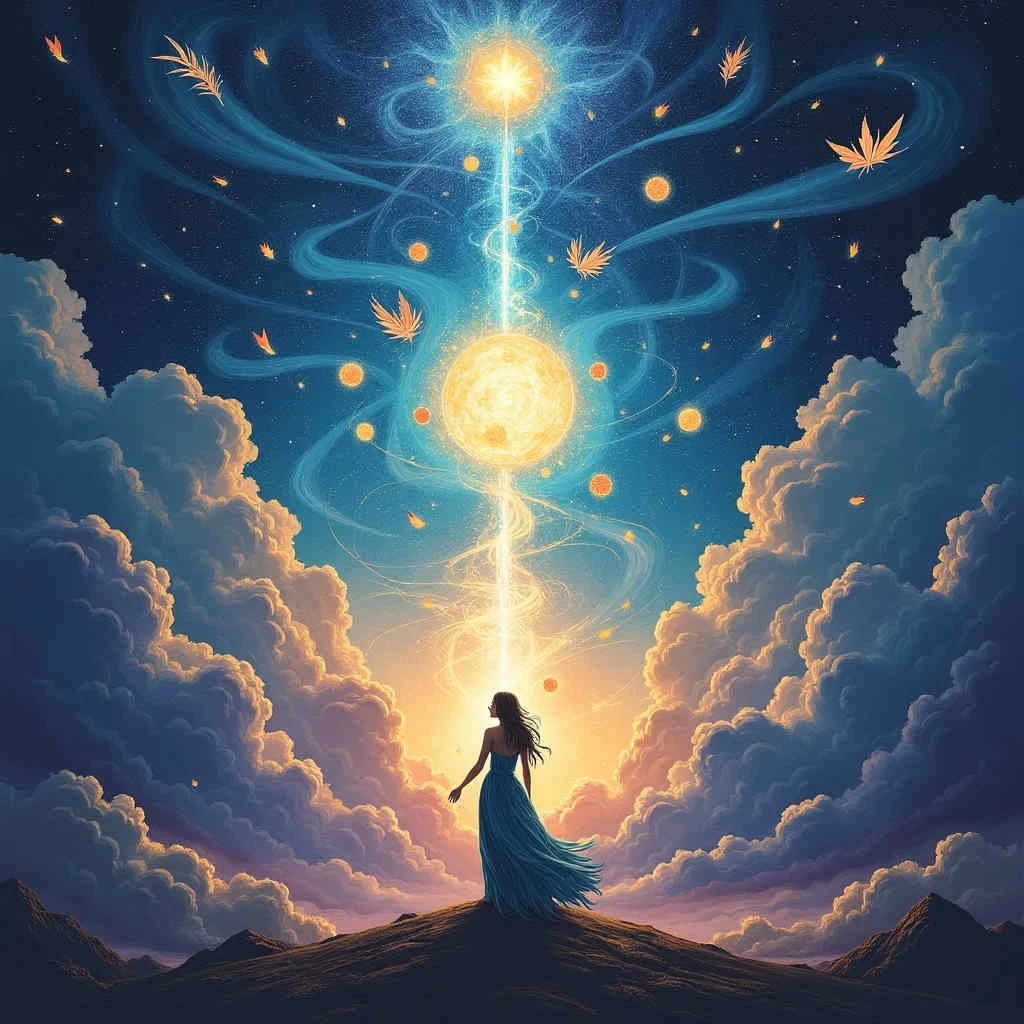Advanced Intuitive Symbol Reading: The Art of Listening with Your Inner Eyes
What if the world wasn’t silent?
What if all around you—on signs, in dreams, in sudden animal encounters or repeating numbers—there were messages meant just for you… nudges, echoes, whispers from the deeper fabric of being?
This is the path of Advanced Intuitive Symbol Reading.

Not a study made only of books, but one where you become an instrument. Where meaning hums through your body like birdsong through the branches: symbolic, electric, sacred.
And you don’t need to be “gifted.” Just willing to remember a language you once knew by heart.
Call it a Language of the Soul
Symbolism isn’t just an art—it’s a literacy of the invisible.
Every culture since time’s dawn has left symbolic tracks behind. From Mayan glyphs to medieval tarot, from ancient petroglyphs to Queen’s chessboard. Why? Because symbols are dimensional. They hold history, energy, metaphor, and archetype—and they travel well across space and psyche.
But intuition? That’s the tuning fork.
Advanced intuitive symbol reading is not about guessing. It’s a deeply personal vocabulary between you and the universe.
Imagine: the oak tree that always appears when you’re asked to be strong. The three crows you see whenever truths start unraveling. The number 7 that knocks again and again when change is near.
It’s a pattern, sure. But more—it’s poetry in motion. And once you learn to read symbols like sensation, metaphor like muscle… everything starts speaking.
🌀 The Schools: Two Paths Through The Forest
Over the centuries, mystics, psychologists, and seers have approached symbol reading from different directions. Most fall into two general avenues—both useful, both potent.
1. Archetypal and Collective: Think Carl Jung and the Mythic Mind
In this path, symbols live inside us all. A snake isn’t just a reptile—it’s a transformation. It’s healing (as with the medical caduceus). It’s temptation (think Genesis). It’s life-death-life.
Carl Jung called these archetypes—primordial images that stir in our collective subconscious. Joseph Campbell, myth scholar and seeker of the Hero’s Journey, leaned on similar truths: the same symbols surface in differing tales, always carrying similar resonance.
To walk this path is to study myth, art, religion, and psychology. It’s like learning the symbols in the universal dream we’re all dreaming.
- Strength: Deep grounding in shared spiritual DNA
- Warning: Can become over-intellectual—your heart needs to stay in the room.
2. Intuitive and Personal: The Language Only You Understand
Then there’s the path of the dreamer, the witch, the poet. This one? Less structure, more sensation.
In this school, symbols aren’t poker chips—it matters when and how they appear. A white feather next to a stranger’s laughter hits differently than one in a cemetery wind. A bee landing on your wrist during heartbreak? That sting carries mystery for you.
This approach leans into divination (tarot, runes, oracle reading) but doesn’t stop there. The world itself becomes your oracle. The left-behind pendant. The number on the receipt. The mural on 5th Ave. The moment when everything stops and something glows.
- Strength: Incredibly alive and personal
- Warning: Can get chaotic or untethered without some structure or grounding
Most advanced readers? Blend both. They study myth like scholars, and listen like mystics.

✧ Tactics of an Advanced Symbol Whisperer
So, how do you actually do this? How do symbols start murmuring truths instead of just floating vaguely in your mind?
Like all arts, intuitive symbol reading is honed through practice. Here are a few beloved tools and pathways to refine your fluency:
1. Create Your Symbol Lexicon (Your Personal Dictionary)
- Start with a journal—a sacred one.
- Every time a symbol startles or stirs you, write it down. Note the time, emotional state, and where it showed up.
- Over time, you’ll begin to see what different symbols mean to you, even if they diverge from traditional definitions.
Let nature be your teacher. Let repetition be your confirmation.
🖋 Prompt: What symbols keep finding you lately? Write them. Circle them. Let them accumulate like stars in a night sky.
2. Develop Your “Symbol Muscles”: Practice Daily Sensing
Before reacting to a symbol, pause.
- Where do you feel it in your body?
- What’s the color?
- What’s the temperature?
- Does it echo a memory? A scent?
Then ask yourself:
Why now? What if this was a dream—what would this mean?
Bringing dream logic into waking life is a powerful strategy. It snaps you out of literalness and into layered awareness.
🧭Try This: Every morning, choose one object you encounter (ring, coffee spill, tiny rock). Treat it like a dream symbol. Look up its meanings. Reflect. Be curious.
3. Trust the Whisper Before the Logic
The first thought you get when you see the red cardinal? That’s the one.
Don’t override it with ““but red means this”” or ““it can’t be important.”” Intuition is often fast and quiet. Doubt is the loud one.
Working with symbols is a practice in trusting the subtle spark before the explanation.
Try: When a symbol catches your eye, whisper, “What are you here to teach me?” Then write down the first answer, no matter how strange.
🕯 Impactful Figures Who Walked This Path
Several figures have danced between intuition and symbolism, leaving torches along the trail:
- ✨ Carl Jung – His archetypes, shadow work, and dream analysis opened the inner door for many.
- ✨ Clarissa Pinkola Estés – Through Women Who Run With the Wolves, she reminded us that stories and symbols are food for the soul.
- ✨ Pamela Colman Smith – Illustrator of the famous Rider-Waite-Smith Tarot deck, she embedded deep symbolic language into everyday mysticism.
- ✨ Indigenous Symbol Keepers – In many open traditions, such as certain shamanic paths, symbols are lived, not studied. They emerge through ceremony, land, and dream, not textbooks.
What they teach us: Symbol doesn’t stay fixed. It breathes with context, culture, and intention. Meaning is a co-creation between you and the sacred.
💫 So, Why Do This?
Why become fluent in this whispering tongue of imagery and metaphor?
- Because life gains dimension.
- Because intuition becomes trustworthy.
- Because feeling “watched over” shifts from superstition to experience.
- Because it anchors your internal knowing in a world that prizes external noise.
You start to see signs where others see coincidence. You start to listen to where others scroll by.
And most of all, you begin a private dialogue with the Mystery. A true companionship.

🧙🏽 Your Next Steps: Practical Magic for the Everyday Seer
Here’s where you go from here:
- 🌀 Create a Symbol Notebook: Record symbols that appear. Add cultural meanings. Then, add what they meant to you. Build your own codex.
- 🌚 Tune in Before Meaning: When a symbol appears, close your eyes. Breathe. Ask: What do I feel? What might this be echoing in my life?
- 🔍 Choose A Symbol & Research It: Feel drawn to the owl? The ankh? The number 3? Choose one. Look up how different cultures interpret this symbol. Notice overlaps, contradictions, and surprises.
- 📿 Begin a Morning Symbol Practice: Pull a card—even a random image from a magazine. Treat it like an oracle. Ask: What message does today hold for me? (Don’t overthink. Let it come.)
💬 Journal Prompts
- If my inner voice had a symbol, what would it be?
- What’s one symbol that has followed me throughout life?
- When have I felt like the world was “sending me a sign”? What happened?
In Closing: The Map is Not Flat
Symbol isn’t information. It’s an invitation.
It doesn’t solve, but reveals. Not with certainty, but with shimmer.
You don’t have to believe blindly or decode everything perfectly to start. Begin with curiosity. Continue with practice.
And remember:
The world isn’t just happening. It’s communicating.
Symbols are its footprints. Your intuition? The lantern.
Follow the trail.
💫
~ SymbolismHub | Decoding Modern Mysticism

Hannah Bright
Hannah Bright is SymbolismHub’s Head Symbolism Interpreter with over a decade of experience studying cross-cultural symbol systems across five continents. A recognized voice in modern mysticism, Hannah has guided thousands of spiritual seekers through personalized symbol interpretation sessions and workshops. When not writing or consulting on symbolic language, she practices active dreamwork and develops intuitive symbol meditation techniques that bridge ancient wisdom with contemporary spiritual practice.